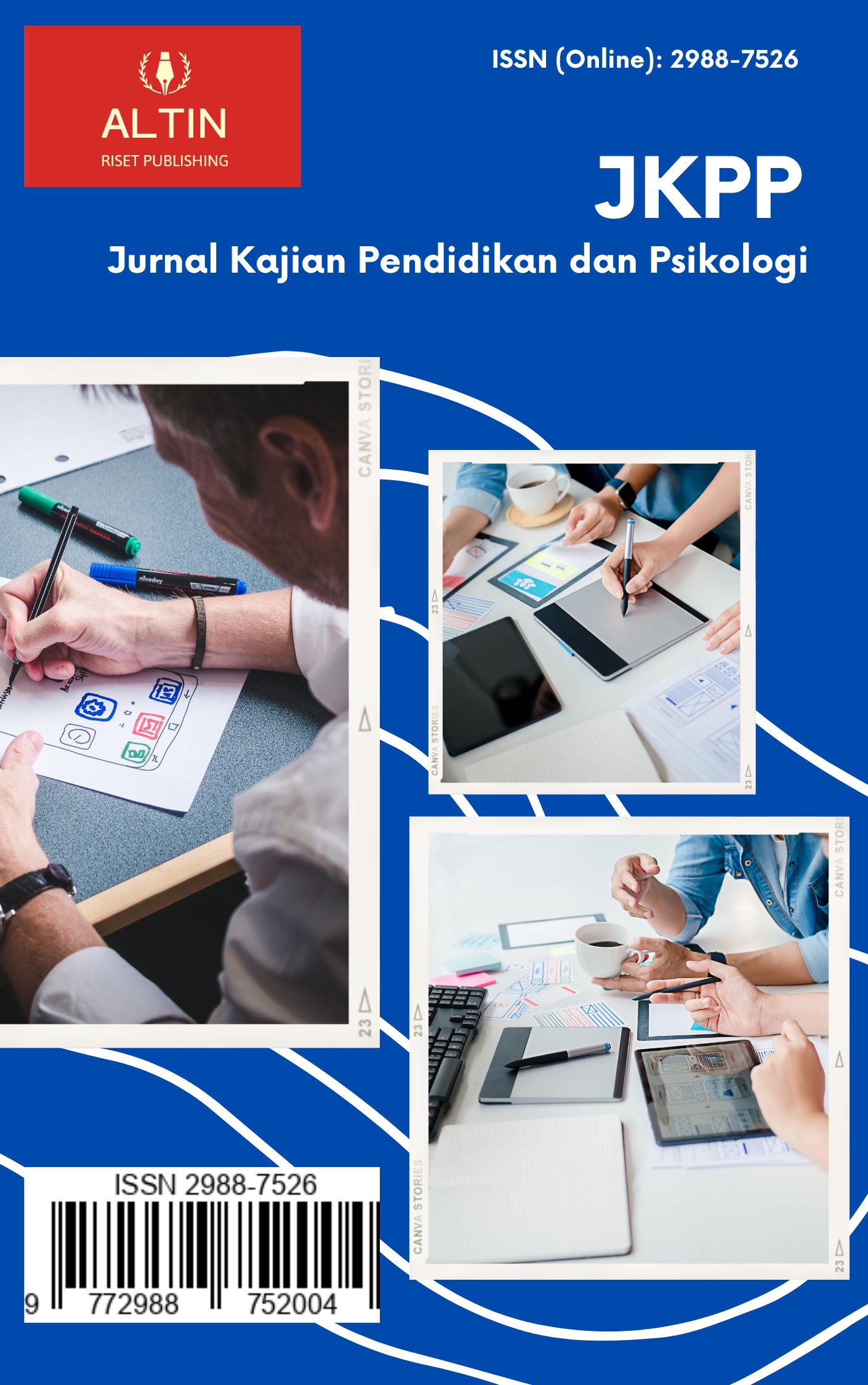VALIDITY AND RELIABILITY OF ADOLESCENT LEARNING STYLE INSTRUMENT (IGBR) DEVELOPMENT: RASCH MODEL ANALYSIS
DOI:
https://doi.org/10.61397/jkpp.v3i1.322Keywords:
Development, Validity, Reliability, Learning Style, RASCH ModelAbstract
Learning style is the way each learner begins to contribute to processing, processing and retain new and difficult information. The development of an adolescent learning style instrument helps students to identify learning style patterns based on the theory used. However, the limitations of the adolescent learning style instrument have only been tested on junior high school students. This research aims to develop, test the validity and reliability of an adolescent learning style instrument using the Winstep software RASCH model. Participants in this research were 840 students at the junior high school level in Tasikmalaya City and Regency. The results of the item validity test using the RASCH Model program Winstep software show that all items are valid (126 items) with the Outfit Mean Square (MNSQ) value. The results of the reliability test of the adolescent learning style instrument, consisting of 126 items, were declared valid; the Cronbach's Alpha value was 0.85, which is in the very good category. The Person Reliability value of 0.87 is at a good level. And the Item Reliability value of 0.99 shows that the level of item consistency is in the special category.
Downloads
References
Arikunto, S. (2010). Metode Penelitian. Jakarta: Rineka Cipta, 173.
Cholifah, Tety Nur, Studi, Program, Dasar, Pendidikan, Islam, Universitas, Rahmat, Raden, Pembelajaran, Kualitas, & Pembelajaran, Peningkatan Kualitas. (2018). Indonesian Journal of Natural Science Education (IJNSE). 01, 65–74.
Coaley, Keith. (2010). An Introduction to Psychological Assesment and Psychometrict. London: Sage Publication Ltd.
Dunn. R & Dunn. K. (1992). Teaching Elementary Students Through Their Individual Learning Styles: Practi_cal Approaches for Grades 3–6. Needham Heights, MA: Allyn and Bacon.
Dunn, Rita, & Dunn, Kenneth. (1993). Teaching Secondary Students Through Their Individual Learning Styles.
Fitriani, Anisa, & Yusri, Fadhilla. (2022). Tingkat Kemandirian Belajar Pada Remaja. Consilium : Berkala Kajian Konseling Dan Ilmu Keagamaan, 9(1), 9. https://doi.org/10.37064/consilium.v9i1.11332
Hermawati, Lilik Istianingsih, & Andayani, Endah. (2020). Kompetensi Pedagogik Guru , Model Discovery Learning , dan Gaya Belajar Terhadap Kemandirian Belajar. 14(1), 22–30.
Ifdil, I. (2010). Pendidikan Karakter dalam Bimbingan dan Konseling. Jurnal Ilmu Pendidikan, 10(2), 55–61.
Kamaluddin, H., Muhammadiyah, Universitas, & Hamka, Prof. (2011). Bimbingan dan Konseling Sekolah. 447–454.
Mashurwati, Yuyun. (2018). PENERAPAN INVENTORY TES GAYA BELAJAR REMAJA DENGAN APLIKASI GOOGLE FORM , MEDIA SOSIAL SERTA PENGEMBANGAN PROGRAM LAYANAN. 1–6.
Nurkancana, Wayan, & Sunartana, PPN. (1992). Evaluasi Hasil Belajar. Surabaya: Usaha Nasional.
Papilaya, J. O., & Huliselan, Neleke. (2016). IDENTIFIKASI GAYA BELAJAR MAHASISWA Jeanete Ophilia Papilaya, Neleke Huliselan. 15(1), 56–63.
Rijal, Syamsu, & Bachtiar, Suhaedir. (2015). Hubungan antara Sikap, Kemandirian Belajar, dan Gaya Belajar dengan Hasil Belajar Kognitif Siswa. Jurnal Bioedukatika, 3(2), 15. https://doi.org/10.26555/bioedukatika.v3i2.4149
Santrock. (2017). Adolescene Perkembangan Remaja Edisi Keenam. Jakarta: Erlangga.
Sappaile, Baso Intang. (2007). Konsep Instrumen Penelitian Pendidikan. Jurnal Pendidikan Dan Kebudayaan, 13(66), 379–391. https://doi.org/10.24832/jpnk.v13i66.356
Slavin, R. E. (2018). Educational Psychology: Theory and Practice (12th ed.). Pearson.
Sugiyono. (2016). Metode Penelitian Kuantitatif, Kualitatif, Dan R&D. Bandung: CV. Alfabeta.
Sumintono, B., & Widhiarson.W. (2014). Aplikasi Model Rasch untuk Penelitian Ilmu-Ilmu Sosial. Bandung: Trim Komunikata Publisher.
Sundayana, Rostina. (2016). Kaitan antara Gaya Belajar, Kemandirian Belajar, dan Kemampuan Pemecahan Masalah Siswa SMP dalam Pelajaran Matematika. 75–84.
Tavakol, Mohsen, & Dennick, Reg. (2011). Making sense of Cronbach ’ s alpha. International Journal of Medical Education, 53–55. https://doi.org/10.5116/ijme.4dfb.8dfd
Downloads
Published
How to Cite
Issue
Section
License
Copyright (c) 2025 Delvira Nur Anbiya, Aam Imaddudin, Dewang Sulistiana

This work is licensed under a Creative Commons Attribution 4.0 International License.








